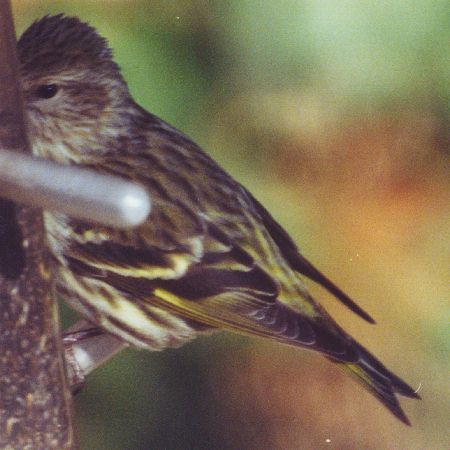




To quote directly from Pyle "Identification Guide to
North American Birds", 1997:
"Geographic Variation - Weak and differences are obscured
by individual variation, probably the result of frequent mixing........
C. p. vagans (br & wint s, AK-Alb to CA-w. Tx;
wanders to NY-VA):, Small (see Sex); plumage medium-pale
buffy olive to whitish, with light to moderately dense, dusky
streaking; yellow in flight feathers averages less extensive by
age/sex.
C. p. macroptera (br & wint nc. Mex; wanders
to AZ-NM):, Large; plumage pale olive to buffy-whitish, with sparse,
indistinct, dusky streaking; yellow in flight feathers averages
more extensive by age-sex; female wg (n10) 70-78, tl (n10) 42-49;
male wg (n11) 73-80, tl (n10) 44-51.
C. p. pinus (br Sask to Nfl-n.ME, wint to s. TX-FL;
wanders to WA):, Small (see Sex); plumage medium-dark brownish
olive to whitish olive, with moderately dense to heavy, distinct,
blackish streaking; yellow in flight feathers averages less extensive
by age/sex.
Sex - female wg (n100) 66-75, tl (n100) 40-48; male wg
(n100) 69-77, tl (n100) 42-50; includes the two subspecies in
northern N. Am. only."
- from the above there appears to be a large range of overlap
in size between the forms. Although macroptera averages
longer wings, I wonder if, as a shorter-distance migrant, it has
blunter wing-tips than vagans and pinus? Could
this individual be the form macroptera?
As always, I would value informed comment
on this page - please indicate whether your comments are to be
considered private/anonymous - thank you.